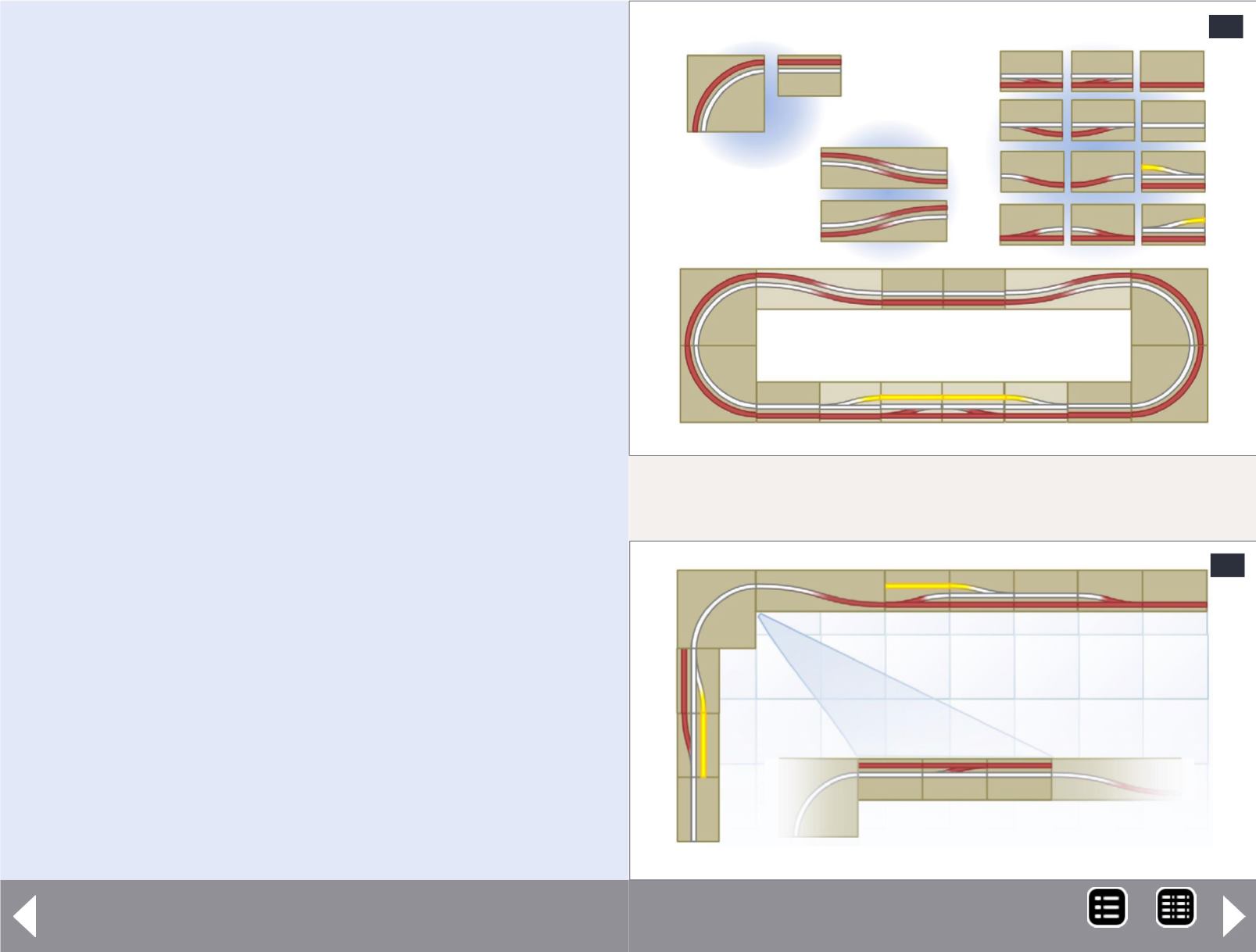
Track plans
So you want a track plan? There’s no need, with modules, you can
rearrange them however you like.
The T-Trak standard lays out basic forms, the most common are
the corner (in this case, the “Alternate Track Spacing” corner) and
a simple straight “Basic Module” depicted in the upper left of [14].
With this, you can create a basic loop layout (the darker colored
modules). In fact, when you go to T-Trak meets, many layouts will
simply be an extension of this, with everybody bringing their own
modules to put together. If going to meets and hooking up with
other modelers seems appealing, this may be a good starting point.
Paul E. Musselman’s site introduces additional modules, allowing
for more interesting trackage. A personal favorite allows modules
to be “reversed” so track can go behind scenery instead of in front.
Notice, though, T-Trak is fundamentally double-track. For our pur-
poses, we consider omitting one of the two tracks. This saves us
money and we may prefer to model a single-track railroad. But
which track do we keep? Well, either one: we can decide.
In the upper right corner we show some single, double, and triple
track options. Using these may not make you welcome at meets,
but for your own purposes, you should find them quite versatile.
Expanding our basic loop with some additional modules (shown
lighter-colored) can get more interesting operation.
But – I hear you say – it’s still a basic caboose-chasing “roundy-
roundy” layout.
Fret not. There’s no reason you can’t do an against-the-wall switch-
ing layout. One possible variant is shown in [15]. You can build the
modules you want, and assemble them how you want. Over time,
you might add more modules to allowmore operating options.
You can put them either at the ends, or even (as illustrated)
between existing modules. Your layout can grow and change, with-
out so much as a tug on the chainsaw pull-cord.
$500 layout 3rd place - 12
14.T-Trak modules and simple layout.
15. T-Trak modules for switching layout that grows.
14
15
MRH-Oct 2014


